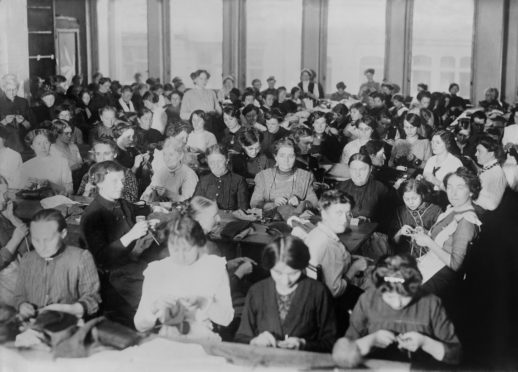Knitting during both the First and Second World Wars was vital for the wellbeing of troops. Whether it was socks, hats, mittens or scarves, handmade gifts meant a lot more than warmth, they truly improved the happiness of soldiers. But did these home comforts just improve morale or was there more to it? Some items are known to have included unique codes that – if put in the right hands – would end the war for good. What was really happening behind those needles?
Many children were taught to knit by their parents as a necessity during wartime. With a quarter of the British population wearing army uniform in the Second World War, it’s not surprising that garments were in high demand – it even led to clothes rationing on 1st June 1941 and became a family effort to make all of the items required for soldiers. It became strictly controlled and wool issued for that purpose couldn’t be repurposed for civilian clothes. The WI had an anti-war stance, so they were initially undecided about whether they could help. However, they soon played a huge part when they realised members would want to do their bit. Amongst making food supplies and raising money, they would knit for service personnel, Civil Defence staff and hospital patients. Crafting during WI meetings wasn’t practical, so many knitting parties were established – perhaps the WI invented the Knit and Natter groups we see today? Communications Officer at the Women’s Institute, Joanna Rayner, explains that during the Second World War, a wartime handicraft policy was agreed. “The WI groups were told they could set up mending parties to fix evacuee children’s clothing and make garments for troops.” By 1945, members had knitted 152,044 gloves, socks, balaclavas, knee covers, scarves, and jumpers.
Lovingly-crafted gifts for soldiers weren’t always as innocent as they might seem. Rumour has it they received knitted codes too. Although it can be tricky to get proof of hidden messages, experts have discovered codes may have been stitched into a piece of fabric in order for spies to send information. Have you ever looked at a knitting or crochet pattern? You’ll agree that to a non-crafter, it looks completely indecipherable. This clearly raised some paranoia, as during the wars many patterns were banned to avoid messages being hidden amongst stitches. This ban didn’t stop the British Secret Intelligence though. They are known to have hired spies in occupied areas who would pose as citizens doing ordinary things – such as knitting. They could then use their hobby as a cover and continue spying on enemies without arousing suspicion. The Belgian resistance even recruited women whose windows overlooked railways to note the trains by adding different stitches into their piece.
The most famous record of knitting and espionage lies with Second World War spy Phyllis Latour Doyle, whose crafty codes had thousands of lives on the line. After joining the army as a mechanic, 21-year-old Phyllis was quickly spotted by the secret service and instead dropped behind enemy lines as a member of the Special Operations Executive. She would ride around the countryside – selling soap and chatting with German soldiers – then transmit information to the Allied Command. “I always carried knitting because my codes were on a piece of silk,” she told New Zealand Army News magazine back in 2009. “I had about 2,000 I could use. When I used a code I would just pinprick it to indicate it had gone. I wrapped the piece of silk around a circular knitting needle and put it in a shoe lace which I used to tie my hair up. I can remember being taken to the station and a female soldier made us take our clothes off – she was looking suspiciously at my hair so I just pulled my lace off and shook my head. That seemed to satisfy her but it was a nerve-wracking moment.” When you think of the thousands of items that were made during the wars, it’s fascinating to consider how many may have been hiding something. Knitting isn’t just a hobby, it saves lives. Find hundreds of free patterns at letsknit.co.uk.










